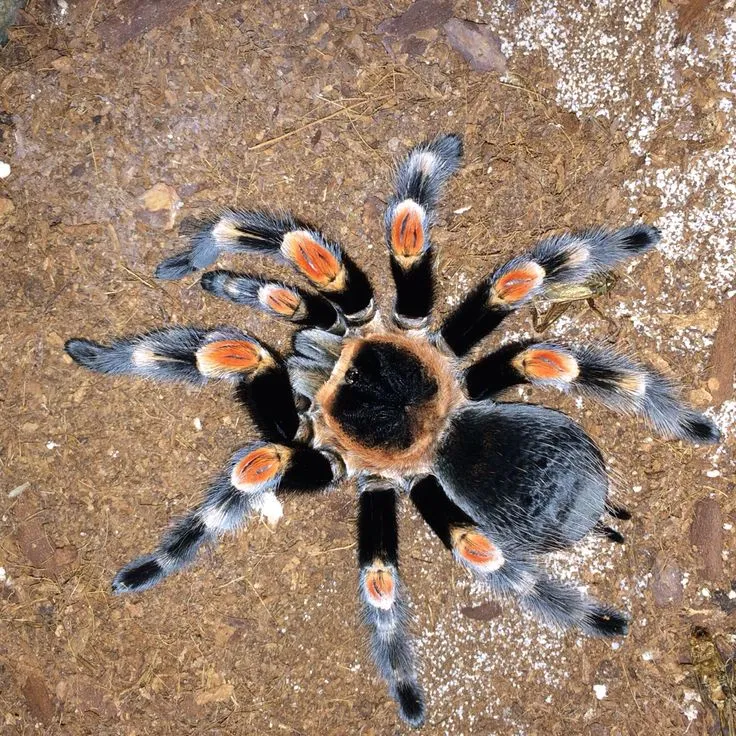Understanding Red Knee Tarantula Humidity Needs
Maintaining the correct humidity levels is crucial for the health and well-being of your red knee tarantula (Brachypelma hamorii). These captivating creatures, native to the arid regions of Mexico, require a specific range of humidity to thrive in captivity. Understanding the importance of humidity, how to measure it, and how to maintain it is fundamental to successful tarantula keeping. This guide provides you with all the essential information you need to ensure your red knee tarantula lives a long, healthy, and happy life. This is a common mistake among new keepers, and the information below will help you provide your pet with the best care.
Why Humidity Matters for Red Knee Tarantulas
Humidity plays a vital role in several aspects of a red knee tarantula’s life. It directly impacts their ability to molt successfully, a process where they shed their exoskeleton to grow. Insufficient humidity can lead to molting problems, such as the tarantula struggling to shed its old skin, which can be fatal. Adequate humidity also aids in proper hydration, preventing dehydration, which can manifest in various health issues. Humidity helps the tarantula to regulate bodily functions, maintain the health of the book lungs (respiratory organs), and overall, enhances their quality of life. Proper humidity is essential for a healthy and thriving red knee tarantula.
The Impact of Low Humidity
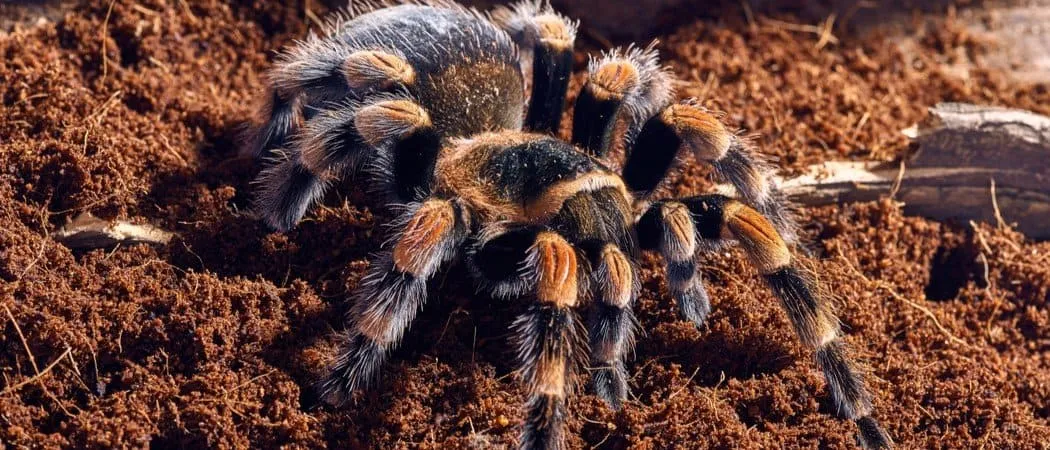
Low humidity presents significant risks to your red knee tarantula. The most immediate concern is the potential for dehydration. Tarantulas absorb moisture through their environment, and when humidity is too low, they can quickly lose vital fluids. This dehydration can lead to lethargy, loss of appetite, and even death. Furthermore, low humidity can make molting incredibly difficult, leading to the tarantula getting stuck in its old exoskeleton. This can cause physical deformities, limb loss, or even death. Therefore, regularly monitoring and adjusting humidity levels is very important.
The Risks of Excessive Humidity
While low humidity is dangerous, excessive humidity can also be detrimental. High humidity levels, particularly when combined with poor ventilation, can create a breeding ground for mold and bacteria. These microorganisms can contaminate the tarantula’s environment, leading to respiratory infections and other health problems. Furthermore, constant exposure to high humidity can weaken the tarantula’s exoskeleton, making it more vulnerable to injury. In extreme cases, this can also cause the tarantula to have issues during the molting process, just like low humidity. It’s, therefore, crucial to strike a balance to ensure optimal humidity for your pet.
Optimal Humidity Levels for Red Knee Tarantulas
Maintaining the right humidity range is key to ensuring your red knee tarantula’s well-being. Finding the ideal balance between too dry and too moist is crucial for the health and happiness of your pet. It’s crucial to maintain the proper humidity levels to ensure the longevity and health of your tarantula.
Ideal Humidity Range
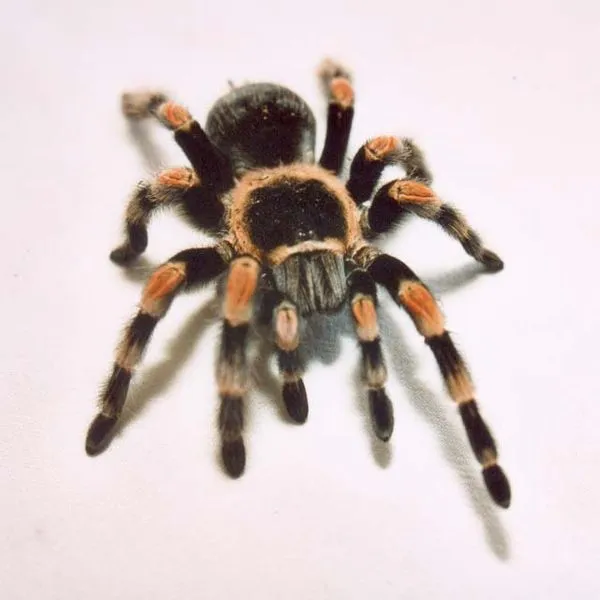
For adult red knee tarantulas, the ideal humidity range is typically between 60% and 70%. This mimics their natural habitat and supports their physiological needs. However, slight variations are acceptable, depending on your local climate and the specific setup of your enclosure. It’s crucial to observe your tarantula for any signs of distress, such as difficulty molting or dehydration, which may indicate that adjustments are needed. Using a reliable hygrometer is essential for accurate monitoring and maintaining the recommended levels. This range helps ensure successful molting, proper hydration, and overall health for your tarantula.
Humidity Variation by Life Stage
The humidity requirements for red knee tarantulas do not change significantly based on their life stage, but some minor adjustments may be necessary. Spiderlings and juveniles are often kept in slightly higher humidity levels, around 70-75%, to prevent dehydration. As they mature, the humidity can be gradually reduced to the adult range. However, it’s essential to always prioritize maintaining a clean and well-ventilated enclosure to prevent mold and bacterial growth. Constant monitoring of your tarantula, regardless of its life stage, is crucial to ensure that you provide the best possible living environment.
Measuring Humidity for Red Knee Tarantulas
Accurately measuring humidity is essential for maintaining the correct environment for your red knee tarantula. Monitoring ensures you can make necessary adjustments and prevent problems. The tools used for this purpose are straightforward, making humidity management accessible to all keepers.
Using a Hygrometer
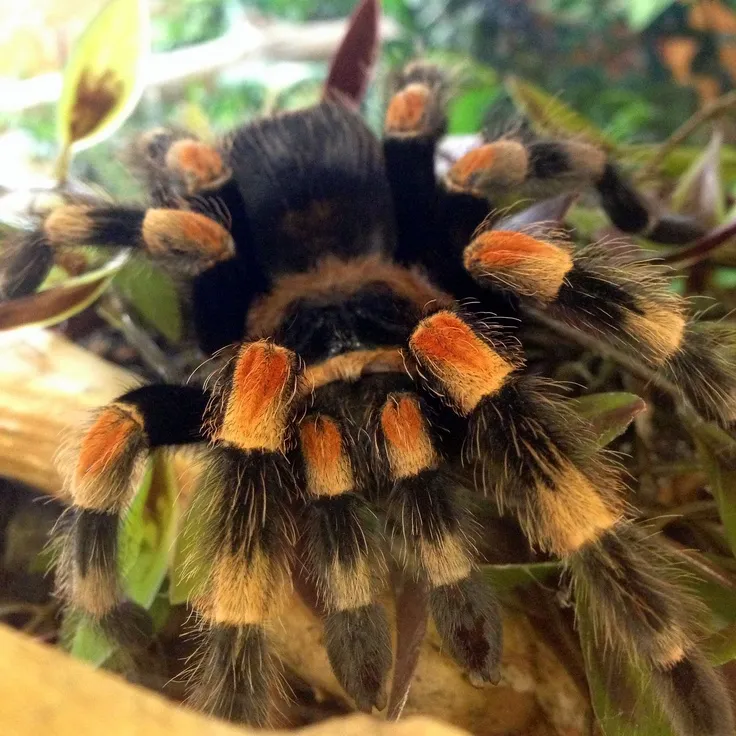
A hygrometer is the primary tool for measuring humidity. There are two main types of hygrometers commonly used digital and analog. Digital hygrometers are generally more accurate and easier to read, providing a clear numerical display of the humidity level. Analog hygrometers, on the other hand, are less expensive but can be less precise. Regardless of the type you choose, ensure that it is calibrated correctly and placed in a location where it is easy to see and monitor. Ensure that it’s properly calibrated to provide accurate readings. The image below shows an example of a digital hygrometer.
Placement of Hygrometer
The hygrometer should be placed inside the tarantula’s enclosure, ideally at the same level as the tarantula spends most of its time. This placement ensures that the reading reflects the actual humidity experienced by the tarantula. Avoid placing the hygrometer directly in the path of water sources, such as a water dish or areas where you mist, as this can lead to inaccurate readings and damage the device. The goal is to get a consistent, reliable reading of the overall humidity level within the enclosure. This will help you assess and modify your tarantula’s environment as needed.
Maintaining Correct Humidity for Red Knee Tarantulas
Maintaining the correct humidity level requires a combination of techniques, including watering methods, substrate selection, and attention to ventilation. Regular monitoring and adjustments are essential to ensure a healthy environment for your red knee tarantula. Implementing these techniques is crucial for the long-term well-being of your pet.
Watering Techniques
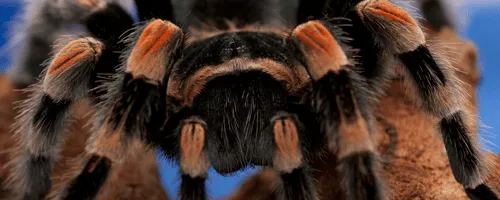
Providing a shallow water dish is a standard practice for hydration. Ensure the water dish is always filled with fresh, clean water. In addition to the water dish, you can also mist the enclosure to increase humidity. However, avoid over-misting, as this can lead to excessive humidity and mold growth. The frequency of misting will depend on the ambient humidity and ventilation within the enclosure. Regularly monitor humidity levels with a hygrometer to determine when misting is needed.
Misting Frequency
Misting frequency should be adjusted based on the enclosure’s humidity and the local climate. In drier environments, you may need to mist more frequently, perhaps every other day or daily. In humid climates, misting might be required less often, possibly once or twice a week. Always monitor the humidity levels with a hygrometer and mist only when the humidity drops below the desired range (60-70%). Ensure the enclosure has proper ventilation after misting to prevent excessive humidity build-up and the growth of mold. The image below shows an example of someone misting their tarantula enclosure.
Substrate Selection
The substrate, or bedding, in your tarantula’s enclosure plays a significant role in maintaining humidity. Substrates like coconut fiber, peat moss, and a mix of vermiculite and soil are excellent choices as they retain moisture well. Avoid using substrates that dry out quickly or are prone to mold. The depth of the substrate can also impact humidity levels; deeper substrates hold more moisture. Choose a substrate that suits your local environment and humidity requirements. Remember to replace the substrate regularly to prevent mold growth.
Ventilation Considerations
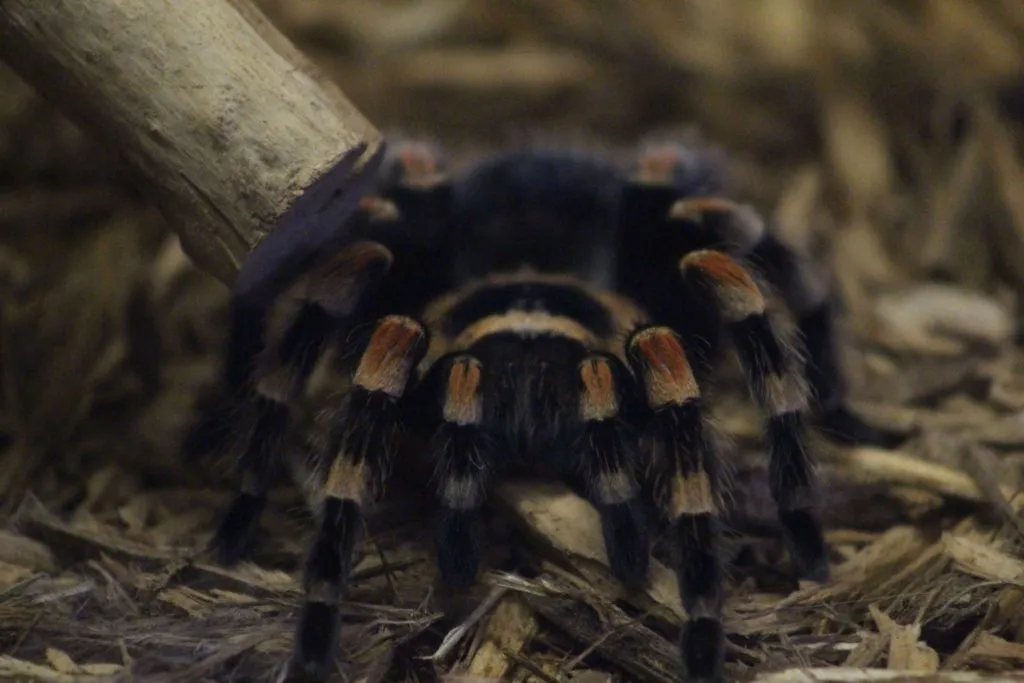
Proper ventilation is crucial for preventing excessive humidity and promoting air circulation within the enclosure. Ensure the enclosure has adequate ventilation holes, typically located near the top and sides. These holes allow for air exchange and prevent the build-up of stagnant, humid air. While ventilation is necessary, avoid excessive air flow, which can dry out the enclosure too quickly. The balance between ventilation and humidity retention is critical for the health of your red knee tarantula. Ensure your enclosure has adequate ventilation holes to promote air circulation and prevent the build-up of excessive humidity.
Troubleshooting Humidity Issues
Despite your best efforts, humidity issues can sometimes arise. Recognizing and addressing these problems promptly is vital to your tarantula’s health. Knowing how to identify and manage these issues can help keep your pet safe and healthy.
Humidity Too Low
If the humidity is too low, you may notice your tarantula becoming lethargic, showing signs of dehydration, or struggling to molt. To increase humidity, mist the enclosure more frequently, ensure the water dish is full, and consider adding more moisture-retaining substrate. If these measures don’t work, you might need to cover a portion of the enclosure’s ventilation holes to help retain moisture. Regularly monitor the humidity levels with a hygrometer to ensure that you are keeping the environment at the right levels.
Humidity Too High
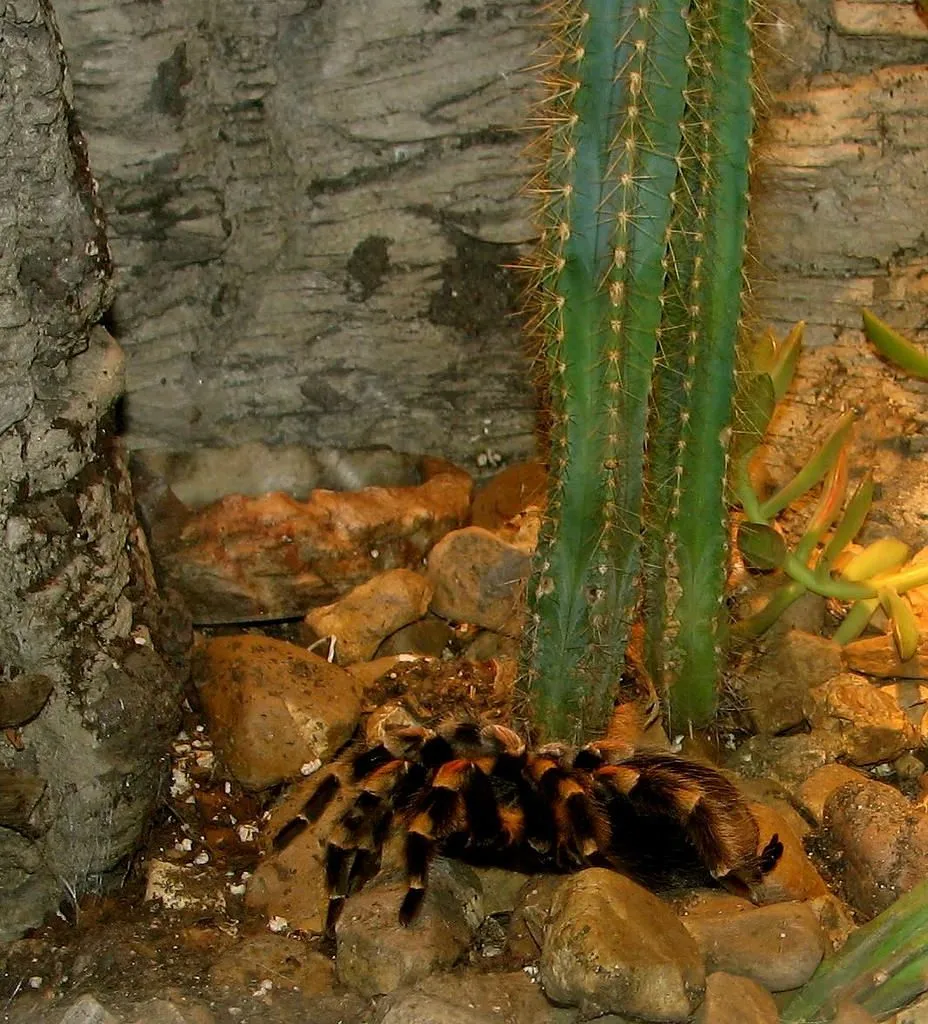
Excessive humidity can lead to mold growth and potentially harm your tarantula. If you notice condensation on the enclosure walls, it’s a sign that the humidity is too high. To reduce humidity, increase ventilation by opening ventilation holes, reduce misting frequency, and use a less moisture-retaining substrate. Ensure the enclosure is well-ventilated to prevent the growth of mold and other harmful organisms. Always make sure the substrate is not overly wet. Act fast when you see problems.
Signs of Dehydration
Dehydration is a serious issue for red knee tarantulas. Signs of dehydration include a wrinkled abdomen, lethargy, loss of appetite, and difficulty moving. If you suspect your tarantula is dehydrated, increase humidity immediately by misting the enclosure, ensuring the water dish is full, and considering offering a small amount of water directly to the tarantula using a dropper. However, be cautious not to stress the tarantula. Contact a vet if the condition is not quickly resolved. It’s crucial to respond swiftly to any signs of dehydration.
Conclusion
Maintaining the correct humidity is an essential part of caring for your red knee tarantula. By understanding the importance of humidity, measuring it accurately, and implementing the right techniques, you can create a healthy and thriving environment for your pet. Remember to consistently monitor humidity levels and adjust your care routine as needed to ensure that your tarantula lives a long, healthy, and fulfilling life. The effort you put into managing humidity will be reflected in your tarantula’s vibrant health and behavior. Always make sure you provide the best care and environment.
